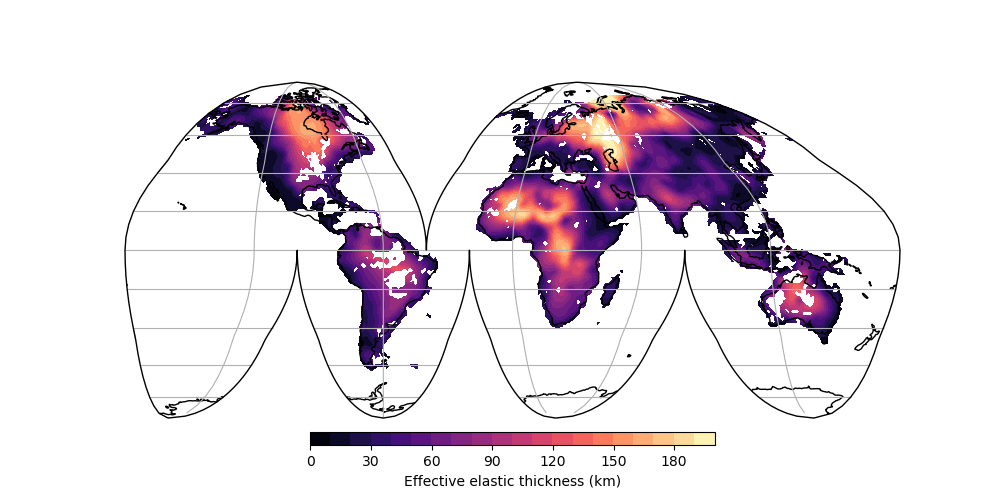Simple tools to extract and plot a global model of effective elastic thickness (Te) of the lithosphere. This Te model was obtained from the inversion of the wavelet coherence between the topography and Bouguer gravity anomalies. See Audet and Burgmann (2011) for details.
See also the software PlateFlex, which describes how to
produce regional grids of Te using the wavelet transform.
The current version was developed using Python3.7 Also, the following packages are required:
We recommend creating a custom
conda environment
where GlobalTe can be installed along with its dependencies.
- Create a environment called
teand install all dependencies:
conda create -n te python=3.7 numpy matplotlib cartopy -c conda-forge- Activate the environment:
conda activate te- Clone the
GlobalTerepository and install usingpip:
git clone https://github.com/paudetseis/GlobalTe.git
cd GlobalTe
pip install .Once installed, you can produce a Te map with three lines in Python:
>>> from globalte import TeModel as TM
>>> model = TM()
>>> model.plot_global()You can also specify to load a data set that does not include data points biased by gravitational noise. You can also check out a different global projection and a different colormap:
>>> model_nobias = TM(nobias=True)
>>> model_nobias.plot_global(proj='IGH', cmap='magma')The corresponding Te grids are available as attributes of the model object:
>>> model.te_global
array([[nan, nan, nan, ..., nan, nan, nan],
[nan, nan, nan, ..., nan, nan, nan],
[nan, nan, nan, ..., nan, nan, nan],
...,
[nan, nan, nan, ..., nan, nan, nan],
[nan, nan, nan, ..., nan, nan, nan],
[nan, nan, nan, ..., nan, nan, nan]])NOTE
Most data points are NaN since Te is only calculated over dry areas (including
shallow shelf areas).
It is also possible to extract a Te value at any arbitrary point on the globe:
>>> model.get_te_point(62.3, -125.7)
44.9015197754
